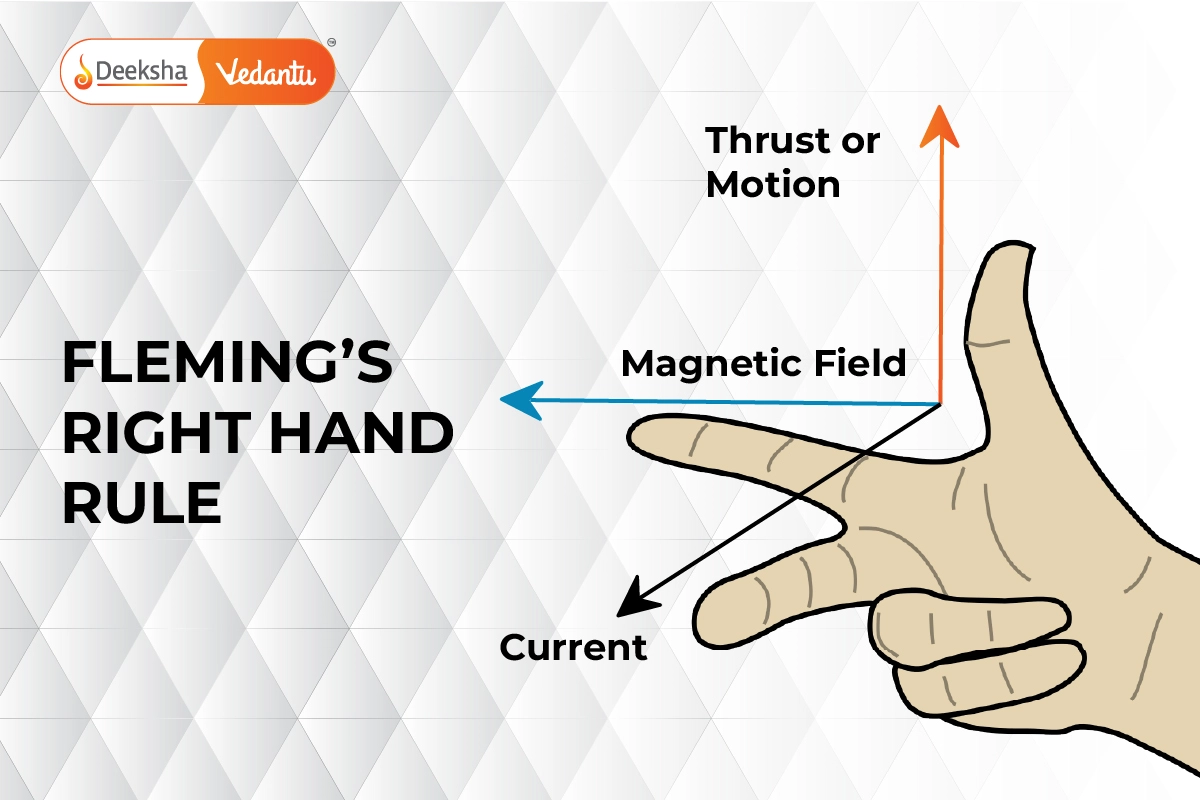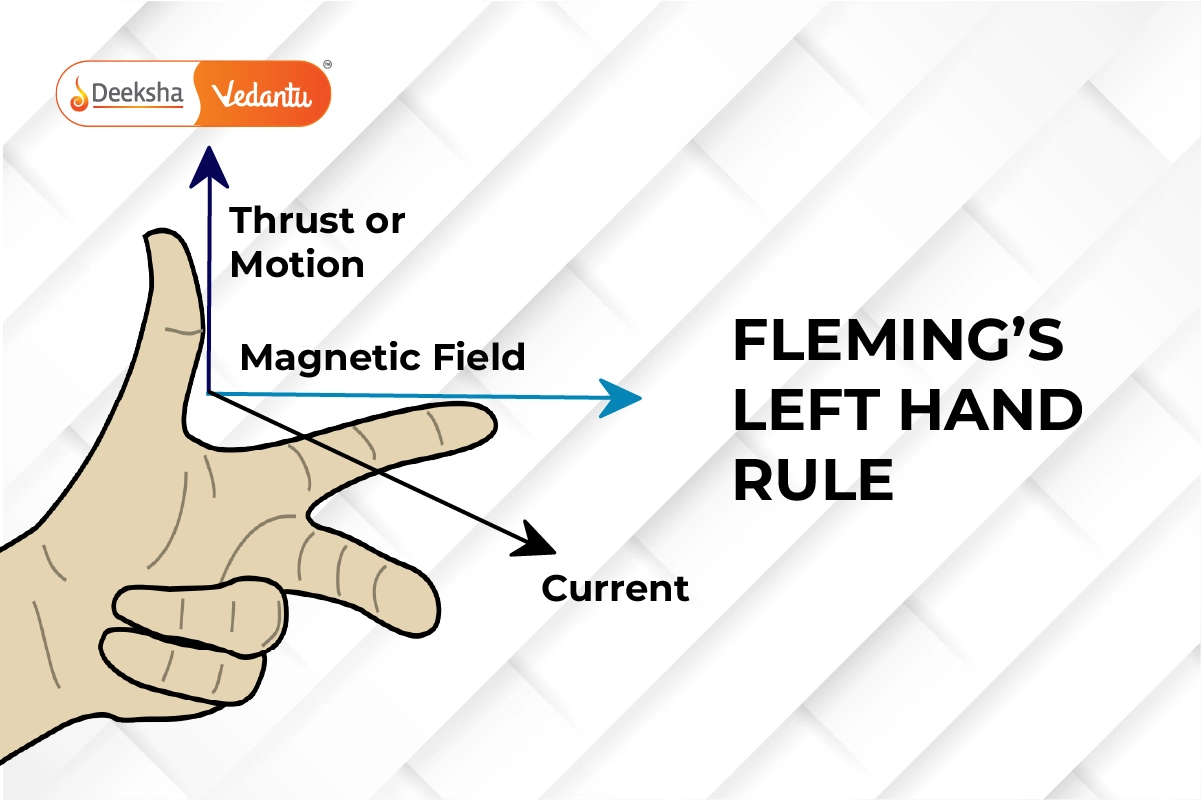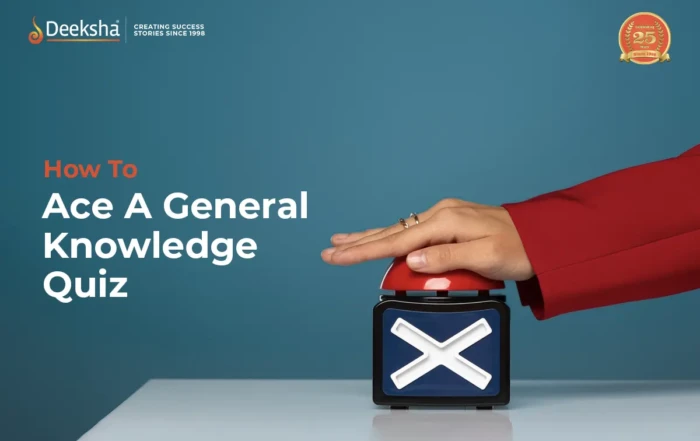Fleming’s Left-Hand Rule and Fleming’s Right-Hand Rule are important concepts in magnetism and electromagnetism. Developed by John Ambrose Fleming in the late 19th century, these rules help determine the direction of electric current in generators or the direction of motion in motors. They indicate the direction of magnetic field, current, and force, but not their magnitude.
What Is Fleming’s Right-Hand Rule?
Fleming’s Right-Hand Rule helps determine the direction of induced current when a conductor moves through a magnetic field, as per Faraday’s law of electromagnetic induction. To use this rule, hold your right hand with the thumb, forefinger, and middle finger perpendicular to each other.

Here’s what each finger represents:
- Thumb: Direction of the conductor’s motion
- Forefinger: Direction of the magnetic field
- Middle finger: Direction of the induced current
What is Fleming’s Left-Hand Rule?
Fleming’s Left-Hand Rule helps determine the direction of the force experienced by a current-carrying conductor in an external magnetic field. When such a conductor is placed in a magnetic field, it experiences a force that is perpendicular to both the direction of the magnetic field and the current.

According to Fleming’s Left-Hand Rule, if you hold your left hand with the thumb, forefinger, and middle finger perpendicular to each other:
- Thumb points in the direction of the force on the conductor.
- Forefinger points in the direction of the magnetic field.
- Middle finger points in the direction of the electric current.
This rule is useful for understanding and predicting the behavior of electric motors and other devices that operate on electromagnetic principles.
Difference Between Fleming’s Left-Hand Rule and Right-Hand Rule
Fleming’s left-hand rule and right-hand rule are both used in electromagnetism but serve different purposes.
Fleming’s Left-Hand Rule:
- Purpose: Determines the direction of force on a current-carrying conductor in a magnetic field.
- Orientation: Extend the thumb, forefinger, and middle finger of your left hand perpendicular to each other.
- Thumb: Points in the direction of the force (motion).
- Forefinger: Points in the direction of the magnetic field.
- Middle Finger: Points in the direction of the current.
Fleming’s Right-Hand Rule:
- Purpose: Determines the direction of induced current when a conductor moves through a magnetic field.
- Orientation: Extend the thumb, forefinger, and middle finger of your right hand perpendicular to each other.
- Thumb: Points in the direction of the conductor’s movement.
- Forefinger: Points in the direction of the magnetic field.
- Middle Finger: Points in the direction of the induced current.
In summary, the left-hand rule is used for motors (direction of force), while the right-hand rule is used for generators (direction of induced current).
Fleming’s Left-Hand Rule Example:
Imagine a current-carrying wire placed in a magnetic field. Let’s say the wire carries current from left to right and the magnetic field is directed upwards. When you apply Fleming’s left-hand rule:
- Extend your left hand with the thumb pointing to the right (representing the direction of the current).
- Stretch your forefinger upward (representing the direction of the magnetic field).
- Your middle finger will then point outward from your palm, indicating the direction of the force exerted on the wire.
Fleming’s Right-Hand Rule Example:
Consider a straight wire moving horizontally through a magnetic field directed into the page. As the wire moves to the right, an induced current is generated in the wire. Using Fleming’s right-hand rule:
- Extend your right hand with the thumb pointing to the right (representing the direction of motion of the wire).
- Stretch your forefinger upward (representing the direction of the magnetic field).
- Your middle finger will then point downward, indicating the direction of the induced current flowing through the wire.
FAQs
Yes, Fleming’s rules can be applied to any direction of current and magnetic field, as long as the correct orientation of the thumb, forefinger, and middle finger is maintained.
Yes, Fleming’s Right-Hand Rule can be used to determine the direction of the induced current in both AC and DC generators as long as the direction of motion and the magnetic field are known.
The left-hand rule applies to situations involving the motor effect (force on a current-carrying conductor), while the right-hand rule applies to electromagnetic induction (induced current). Using different hands helps distinguish between these two different phenomena.
The left-hand rule is used for motors to determine the direction of the force on a current-carrying conductor, while the right-hand rule is used for generators to find the direction of the induced current.
Extend the thumb, forefinger, and middle finger of your right hand perpendicular to each other. The thumb points in the direction of the conductor’s movement, the forefinger points in the direction of the magnetic field, and the middle finger points in the direction of the induced current.
Extend the thumb, forefinger, and middle finger of your left hand perpendicular to each other. The thumb points in the direction of the force (motion), the forefinger points in the direction of the magnetic field, and the middle finger points in the direction of the current.
Fleming’s Right-Hand Rule is used to determine the direction of the induced current when a conductor moves through a magnetic field.
Related Topics
- Factors On Which The Resistance Of A Conductor Depends
- Wheatstone Bridge
- Scattering Of Light
- What is Hypothesis?
- Thermodynamics
- Resistance Of A System Of Resistors
- Electricity
- Electric Potential And Potential Difference
- Zener Diode
- Protection Against Earthquake
- Acceleration
- Velocity
- Refraction Of Light Through A Prism
- Circuit Diagram
- Compound Microscope












Get Social